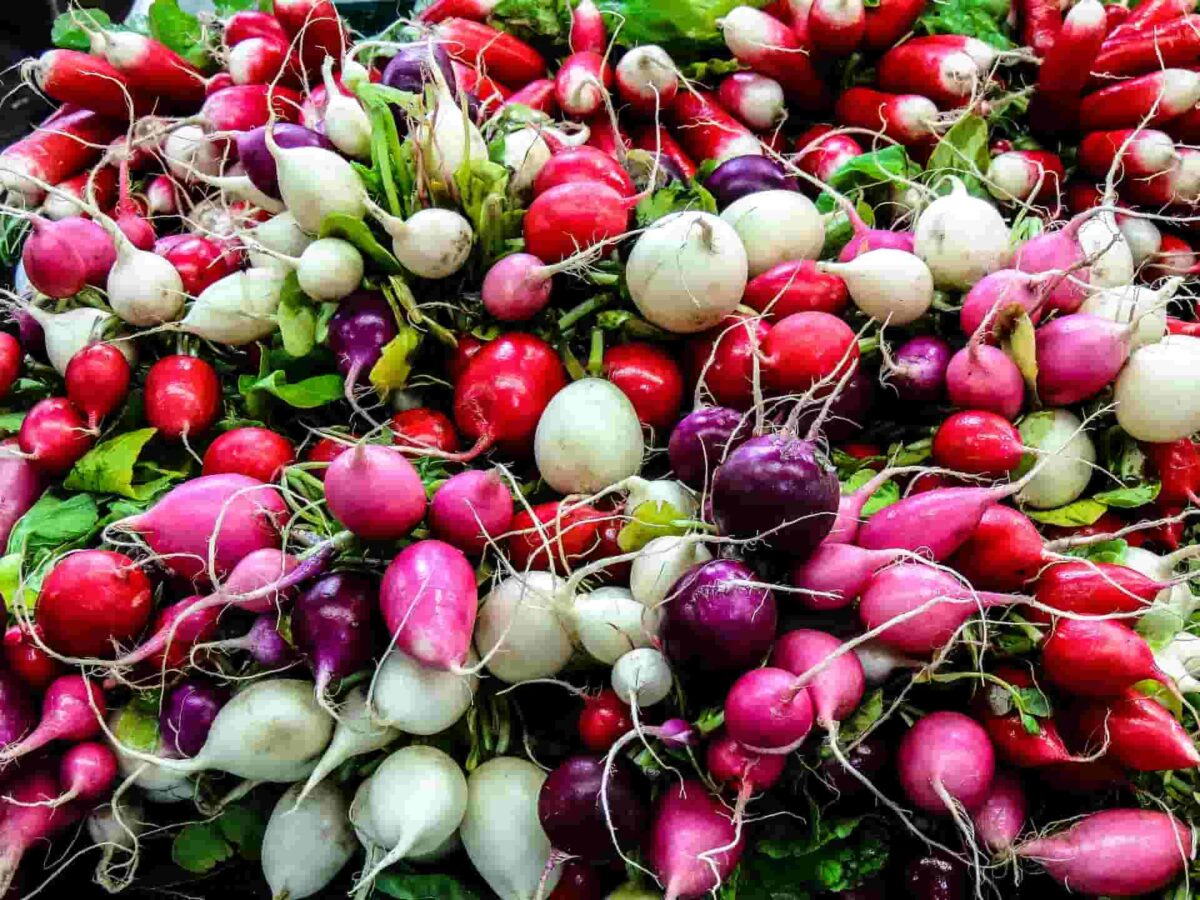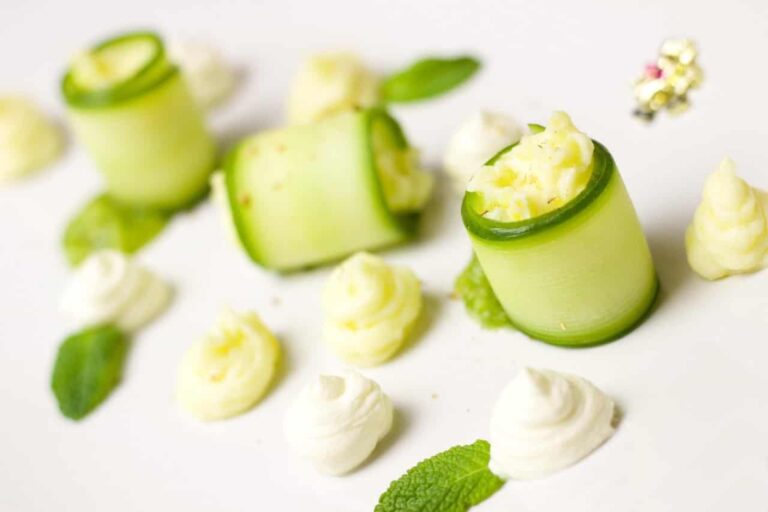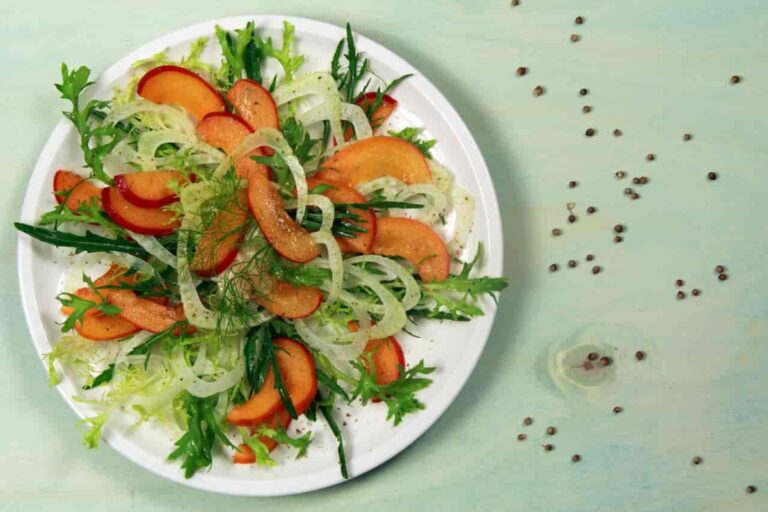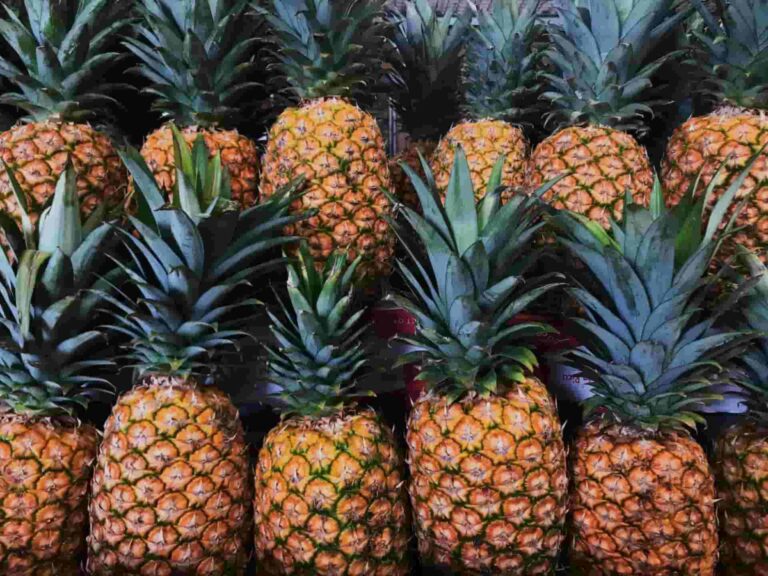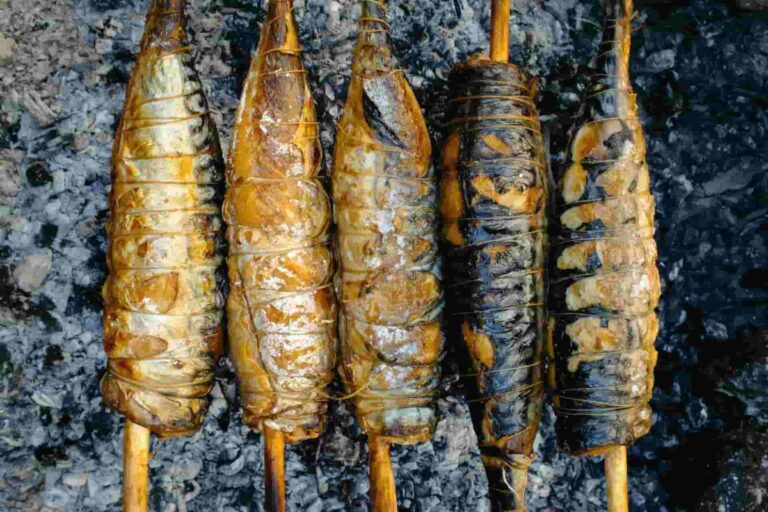30 top radish kitchen insights and benefits
Did you know that in ancient Greece and Rome, radish was considered to be one of the most popular vegetables?
- They were accorded such an exceptional level of esteem in ancient Greece that golden copies of their sculptures were fashioned in their honour, with the intention of presenting them as an offering to the Greek god Apollo. Another piece of trivia worth noting is that the word “radishes” originates from the Latin word “radix,” which may be directly translated into English as “root.”
- There is practically little archaeological evidence available to assist pinpoint the early history of radishes or when they were first domesticated, despite the fact that radish varieties are now widely scattered throughout the globe. In spite of this, researchers have a strong suspicion that Raphanus sativus originated in southeast Asia since this is the only location of the world where true wild versions of the plant have been found. It would seem that India, central China, and Central Asia were secondary hubs where different versions of the culture were created.
- The edible root may be round, long and cylindrical, or tapered, depending on the type, while the outer skin can be white, yellow, pink, red, purple, or black. Its form can vary from spherical to long and cylindrical to tapered. A longer root type, comprising oriental radishes, daikon or mooli, and winter radishes.
- “The Night of the Radishes” is a radish festival that takes place on December 23rd in Oaxaca, Mexico. The event features nativity scenes that have been carved from radishes!

Radish nutrition values and health benefits
- Ascorbic acid, often known as vitamin C, may be found in very high concentrations in radishes. Just a half cup delivers around 14 percent of the daily requirement for this nutrient. Vitamin C is an antioxidant that helps your body fight the free radicals that are created by ageing, an unhealthy lifestyle, and environmental toxins. It also helps prevent cell damage that may be caused by these things. Maintaining a healthy immune system requires a consistent intake of vitamin C.
- It has been suggested that eating cruciferous veggies like radishes might help lower one’s chance of developing cancer. Research indicates that cruciferous vegetables contain molecules that, when combined with water, break down into isothiocyanates and other compounds. Isothiocyanates have an important role in both the elimination of carcinogenic substances from the body and the suppression of the growth of tumours.
- Radish juice may be effective in the prevention of stomach ulcers by conserving gastrointestinal tissue and enhancing the mucosa barrier, as shown by a separate body of studies. Maintaining a healthy mucosal barrier is necessary in order to protect your digestive tract from pathogenic microbes and toxic chemicals, both of which have the potential to induce ulcers and inflammation in the mucosal lining of your digestive tract.
- Radishes, on their own, have characteristics that inhibit the growth of fungi. They contain the antifungal protein known as RsAFP2, which may be found in a wide range of bacterial strains. The fungus Candida albicans, which is often found in humans, was shown to be eliminated by the protein RsAFP2, according to the findings of the researchers. When it reaches a certain size, the yeast Candida albicans has the potential to cause invasive candidiasis in addition to vaginal yeast infections, oral yeast infections (also known as thrush), and oral yeast infections in general.
- Radishes contain a variety of chemical compounds, including glucosinolates and isothiocyanate, both of which have been demonstrated to assist diabetics in better controlling their blood sugar levels. Consuming radishes is associated with an increase in the production of natural adiponectin in the body, which is an additional health advantage. It is possible that having higher amounts of this hormone might be advantageous in the fight against insulin resistance. Radishes also contain the antioxidant coenzyme Q10, which research has shown may aid in warding against the onset of diabetes.
- Radishes contain a variety of compounds, including indole-3-carbinol and 4-methylthio-3-butenyl-isothiocyanate, both of which are beneficial to the liver’s ability to cleanse itself of toxins and to repair any damage they may have caused. These very same molecules also play a role in the kidneys’ ability to eliminate harmful substances from the body.
- Radishes have a high concentration of antioxidants in addition to a variety of nutrients, including calcium and potassium, amongst others. These minerals, when combined, may help lower high blood pressure and lower the risk of developing heart disease in those who may otherwise be at risk. Radishes are a wonderful food choice for anybody looking to improve their blood circulation because of the natural nitrates they contain.
- Radishes should not be an afterthought while you are perusing the produce section of your neighbourhood grocery store; you should not allow them slide through your fingers. In spite of the fact that you might not be able to consume enough food to meet the daily recommended intake for each nutrient, including one or two servings of fruits and vegetables in your diet every day will provide a healthy dosage of the beneficial nutrients and disease-fighting chemicals that these foods contain.
100g of radish has 16 calories (66kj), 0.7g protein, 0.1g fat, and 3.4g carbs, including 1.6g fibre.

- Radishes may be stored in the refrigerator for up to eight days without losing their characteristic crisp texture. Radishes can be red, white, or purple in colour, depending on the variety. If you prefer to store the radishes in a canning jar, they will remain fresh for a maximum of eight days before turning bad. You have up to two weeks to consume them in the freezer before they get ruined.
- The roots should next be washed carefully and completely since they often contain a great deal of dirt. While trying to preserve vegetables, water should be avoided at all costs. As a result, if you want your radishes to maintain their firmness, you should let them air dry fully before storing them. If you have access to a dehydrator, the drying process should be significantly less difficult and take much less time.
- Before placing them in the refrigerator, you should first place the majority of radishes in a plastic bag. But, you should place some paper towels in the plastic bag so that it may continue to absorb the moisture even after they are added. Before you put anything away, you need to be sure that the resealable bag is completely devoid of air.
- The option of freezing your radishes might also add extra days to their lifespan. The radish leaves come out beautifully when prepared using this way as well. Be careful to preserve the radishes properly so that you can get the most out of them when they have been defrosted. How do you do this? Once they have been sliced, the radishes should be blanched. The blanching should take no more than three minutes. You must take care that they do not lose their colour or texture. Following this step, you are going to dunk them in some cold water and then dry them. Your radishes may now be placed in freezer bags and put away for later use.
- Your radishes have become soft or mushy despite the fact that you have preserved them in the best possible manner; yet, something is still wrong. Several of the radishes in your bunch have a mushy or wet texture. Well, it is an indication that they have gone bad, and you should throw them out at this point. Radishes that are still fresh should have a snap to them, and their skin should be rough.
- If your radishes have a pungent odour, it is time to toss them out since they have gone bad. Radishes do not have a very long shelf life. A healthy radish will not have the feature of having a strong odour.
- Mould development — Do radishes not get spoiled until they begin to grow mould? Yes. Radishes, like all other types of vegetables, may get contaminated with mould, which is an indication that you should dispose of them as soon as possible.
- Altering its colour is another one of the tell tale signs that a radish has gone bad and should be discarded. If you notice that the colour of your radishes is changing, it is possible that they have passed their expiration date.
- Be wary of the leaves: When it comes to leaves, it is important to examine the moisture content. Radish leaves that are withering should not be consumed. In addition, the presence of black spots may be an indication that the radish has gone bad. Leaves that have a foul odour have no place being stored in the refrigerator, just as roots do not belong there.

Cooking techniques, secrets, and tips from the kitchen
- The several kinds of radishes
- It is a Red Round. The round or oval red radish is perhaps the most well-known kind of radish. There is a good chance that the varieties ‘Champion,’ ‘Cherry Belle,’ and ‘Comet’ will be the ones you discover at your local farmer’s market. The flesh of these radishes is firm, crisp, and white in colour. The round, red radish has a moderate flavour in the spring, but as the temperature heats up, its flavour becomes more spicy. You may either consume the red radish as an appetiser by slicing it and making a sandwich with bread and butter, or you can serve it as an appetiser on its own.
- The French radish is the kind of radish that is the second most common. It has the appearance of a little carrot, with red skin that fades into white at the root end and white flesh throughout the rest of the carrot. This radish is not only delicious enough to have for breakfast, as the French do, but it also goes well with other fresh vegetables that are offered as crudités.
- The giant white radish, also known as daikon (which is the Japanese name for it), has been popular in many Asian nations for a very long time. The flesh is white, and its flavour is more spicy than that of other red radishes. It has a more subdued flavour when cooked, which is why it is eaten prepared in many Asian nations for breakfast, lunch, and supper.
- Icicle radishes are a kind of white radish that have a flavour that is more moderate than that of red radishes. Icicle radishes are considerably smaller than daikon radishes and nevertheless have an elongated, tapering shape.
- The black radish, which is around the same size as a big turnip or red radish but is dark black in colour, is almost as pungent as horseradish. Draining it, treating it with salt, or heating it is necessary in order to make it readily palatable. Since it is drier than other varieties of radishes, the black radish, which is also known as the black Spanish radish, is particularly popular in Eastern European cuisine, where it is often combined with sour cream or shellfish.
- The watermelon radish is comparable in size and form to the black radish. It has a green skin on the outside and an inside that ranges in colour from pink to red and radiates out from the centre. The watermelon radish has a pleasant sweetness and a crisp texture.
- The exterior of a Korean radish is jade green, and the flesh within may vary in colour from green to white. It is a huge root, about the size of a turnip. The radish has the flavour of something sweet and juicy.
- Both the roots and the greens of a radish may be eaten, but they can be prepared in two different ways.
- Young radish greens that have just sprouted are tender enough to eat fresh in a salad or blend into a pesto.
- Radish greens, especially when cooked, are a superb culinary green despite their fuzzy, bitter, or abrasive raw state.
- Thoroughly washing the leaves at the end of each growing season helps get rid of the dust and debris that has accumulated on them.
- The greens must be dried before being chopped to the appropriate size for the meal.
- You can add the vibrant colour and extra nutrients of radish greens to dishes like curries, soups, stews, quiches, frittatas, and casseroles.
- They may also be cooked in the same ways as kale, Swiss chard or turnip greens by sautéing, blanching, braising or steaming them alone or in conjunction with other culinary greens.
- Radishes are often fermented in kimchi as one of the vegetables that play secondary roles to cabbage, which is the primary element in kimchi. But, given how good they are, they warrant their own unique cooking method.
- While though fermentation weights and airlock lids specifically designed for fermenting are essential, you may make do with objects found around the home for the odd ferment. You may use a tiny jelly jar that holds 4 ounces of liquid as a weight, or you can fill a plastic food storage bag with more brine and use it instead.
- After the fermentation process is complete, take the weight off the jar, replace it with a standard top, and put the radishes in the refrigerator for anywhere between three and six months.
- It is possible that the jar may burst open if the fermented radishes are kept at room temperature after the fermentation process has been completed.
- The flavour of radish goes well with a wide range of different vegetables and dishes, such as beetroot, butter, citrus, green beans, potatoes, salad greens, soft green herbs, and spring onions, to mention a few of them.

History of radish from the beginning until today
- It is generally believed that radishes originated in China, and it is possible that wild forms of the vegetable may still be discovered in that country today.
- The word “root,” and more specifically the root of the radish plant, is where the English word “radishes” originates from. The Latin word “radix” translates directly to “root.”
- The ancient Greeks put such a high value on the radish that they offered little gold radishes as a sacrifice to the god Apollo in order to honour him. Ancient Egyptian records reveal that radishes were being grown long before the building of the pyramids.
- Throughout the Middle Ages, there was a surge in interest in growing giant radishes, and this trend caught on not just in Europe but also in the Orient at the time. It was not until the middle of the 16th century that small radishes were first recorded in Europe and Britain. The earliest record of giant radishes was found in Germany in the 13th century. By the year 1586, tiny radishes were very fashionable in Great Britain and across Europe.
- The Spanish explorers were responsible for introducing several new plant species to the Americas, and one of the earliest of them was the radish. According to historical documents, radishes were being cultivated in Mexico as early as the year 1500, and in Haiti as early as 1565.
- The radish quickly became popular in the Americas, and by the year 1848, there were eight different varieties of radish available for consumers to choose from.
- Radishes are a common ingredient in salads, but you can also find them in a wide range of recipes that are traditional to Europe. To provide a colourful and flavorful display for traditional Mexican meals such as tostadas, sopes, enchiladas, and posole stew, radishes are sliced and blended with shredded lettuce to make a garnish. This garnish is used across Mexico.

